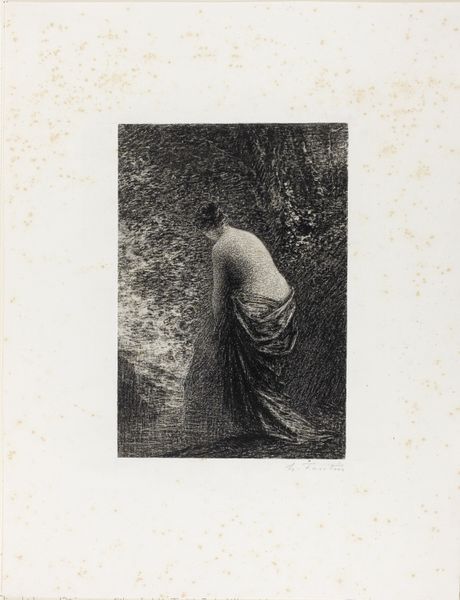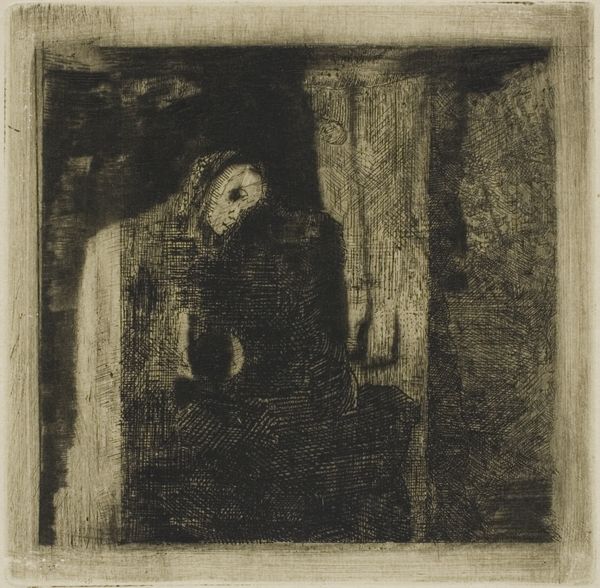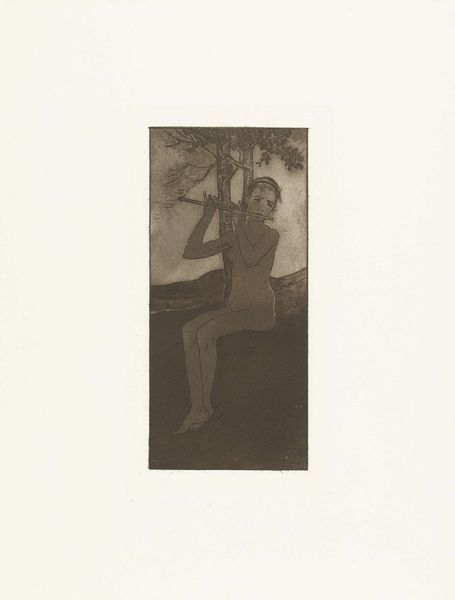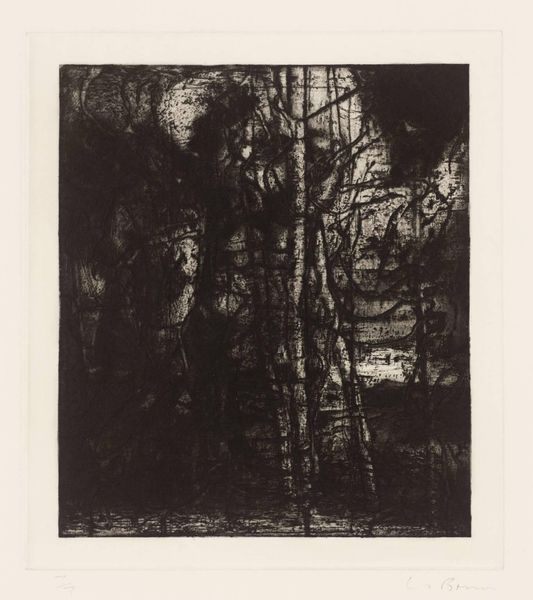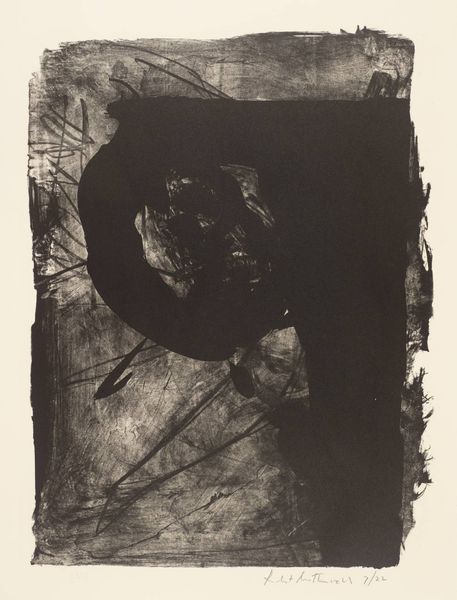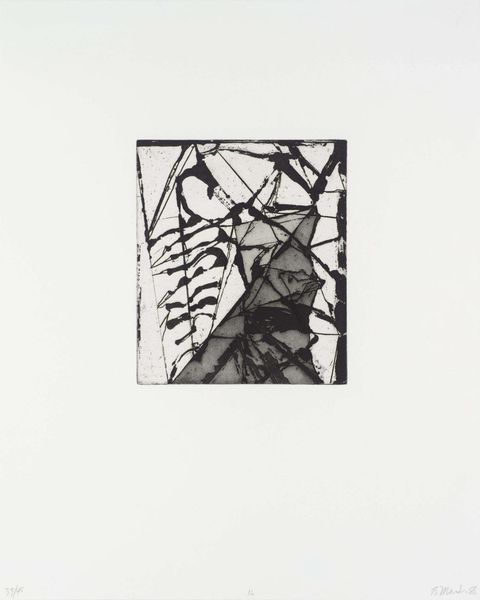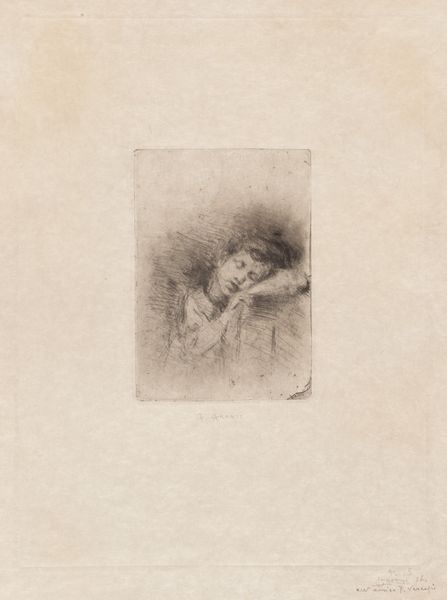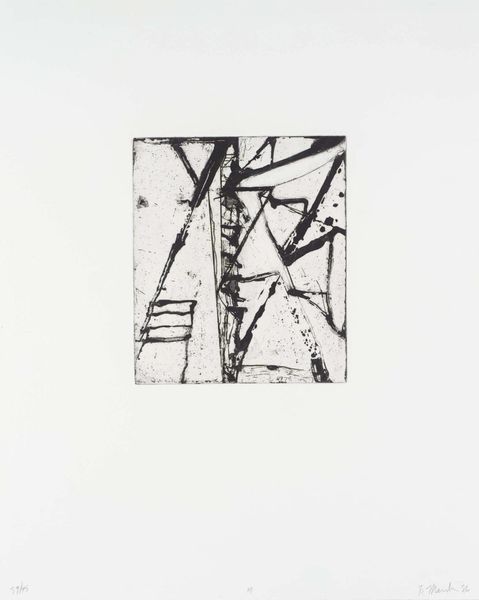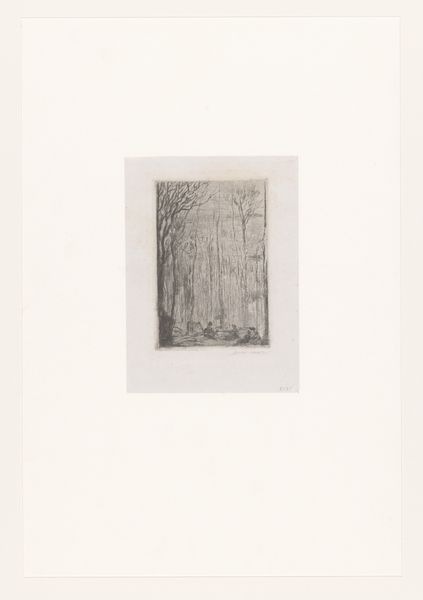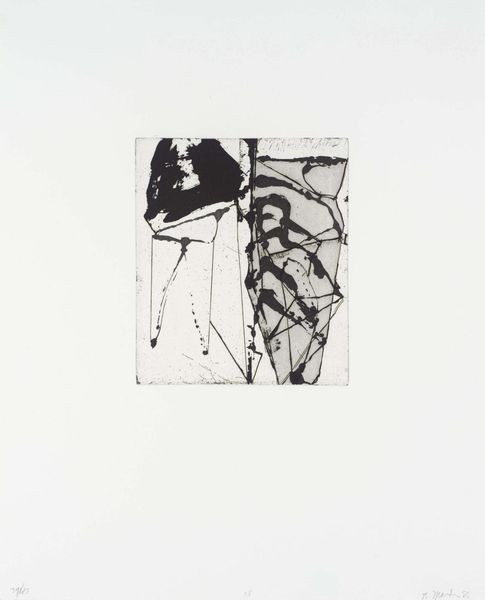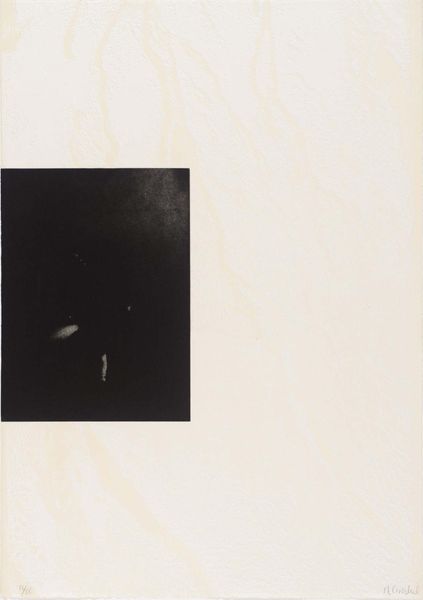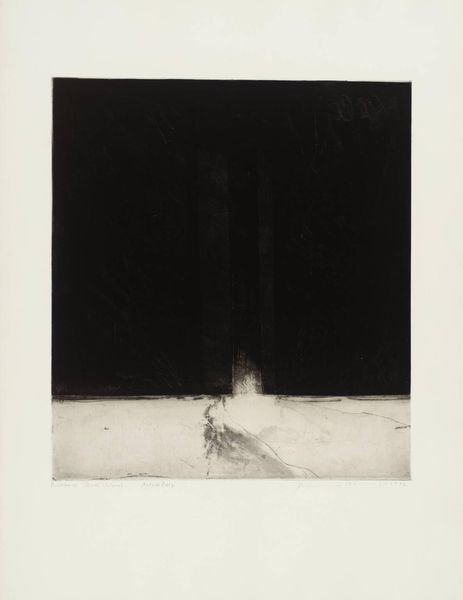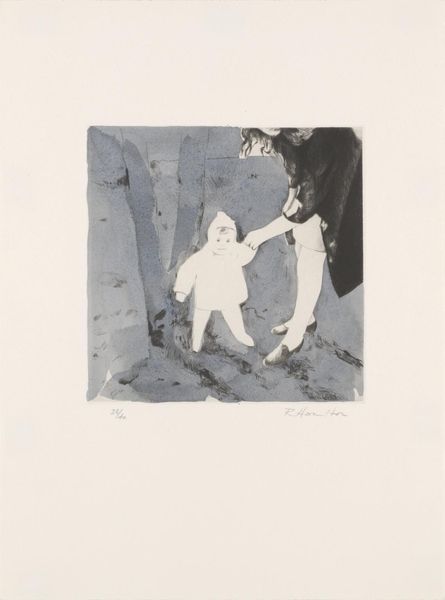
drawing, etching, graphite
#
drawing
#
etching
#
landscape
#
symbolism
#
graphite
#
monochrome
Dimensions: height 198 mm, width 130 mm, height 382 mm, width 280 mm
Copyright: Rijks Museum: Open Domain
Curator: Today, we’re looking at an etching and graphite drawing by Auguste Donnay titled "Jonge vrouw met sluier in donker landschap met bomen," or "Young Woman with Veil in Dark Landscape with Trees," likely created between 1895 and 1898. What strikes you first about it? Editor: Immediately, the density of the shadows. It’s almost suffocating. You can practically feel the weight of the ink pressed into the paper, creating this incredibly somber, introspective mood. The material itself speaks of isolation. Curator: Indeed. Donnay masterfully manipulates chiaroscuro. Note how the artist balances the velvety blacks against sparse highlights, carefully guiding the eye. The veil, seemingly both obscuring and revealing, creates a visual paradox typical of Symbolist aesthetics. Editor: And consider the labor involved in an etching. Each line meticulously etched into the metal plate, then inked, and finally pressed. It mirrors the slow, deliberate construction of emotion. Was this meant for mass production, or for a select few? The social and economic realities of printmaking heavily influenced its distribution and reception. Curator: Its potential reproducibility is countered by the almost ghostly, ethereal quality. The tonal variations, the soft rendering of form, suggests a psychological landscape as much as a physical one. The formal qualities intimate subjectivity and internalization. Editor: Precisely! Look at the textures conjured with such minimal means. You see the paper almost as much as you see the trees. The materials, graphite and etching, play together, becoming co-conspirators, almost alchemically—changing how the image reflects the hand labor involved. This links the act of making to the mood. Curator: It speaks to a deliberate artistic choice, aligning form and content perfectly. The woman's introspective posture and the oppressive darkness amplify a sense of quiet despair—a pictorial rendering of fin-de-siècle anxieties. Editor: So, a lonely and isolated work produced through a process that's itself laborious. That it uses graphite, also means that it is intrinsically about labor and is intimately linked with industry. So this brings up the question, how do industrialization and mental life coalesce into this particular scene? Curator: That is quite the insightful perspective, grounding this in an interesting context. Editor: I think focusing on labor reveals new understandings.
Comments
No comments
Be the first to comment and join the conversation on the ultimate creative platform.
